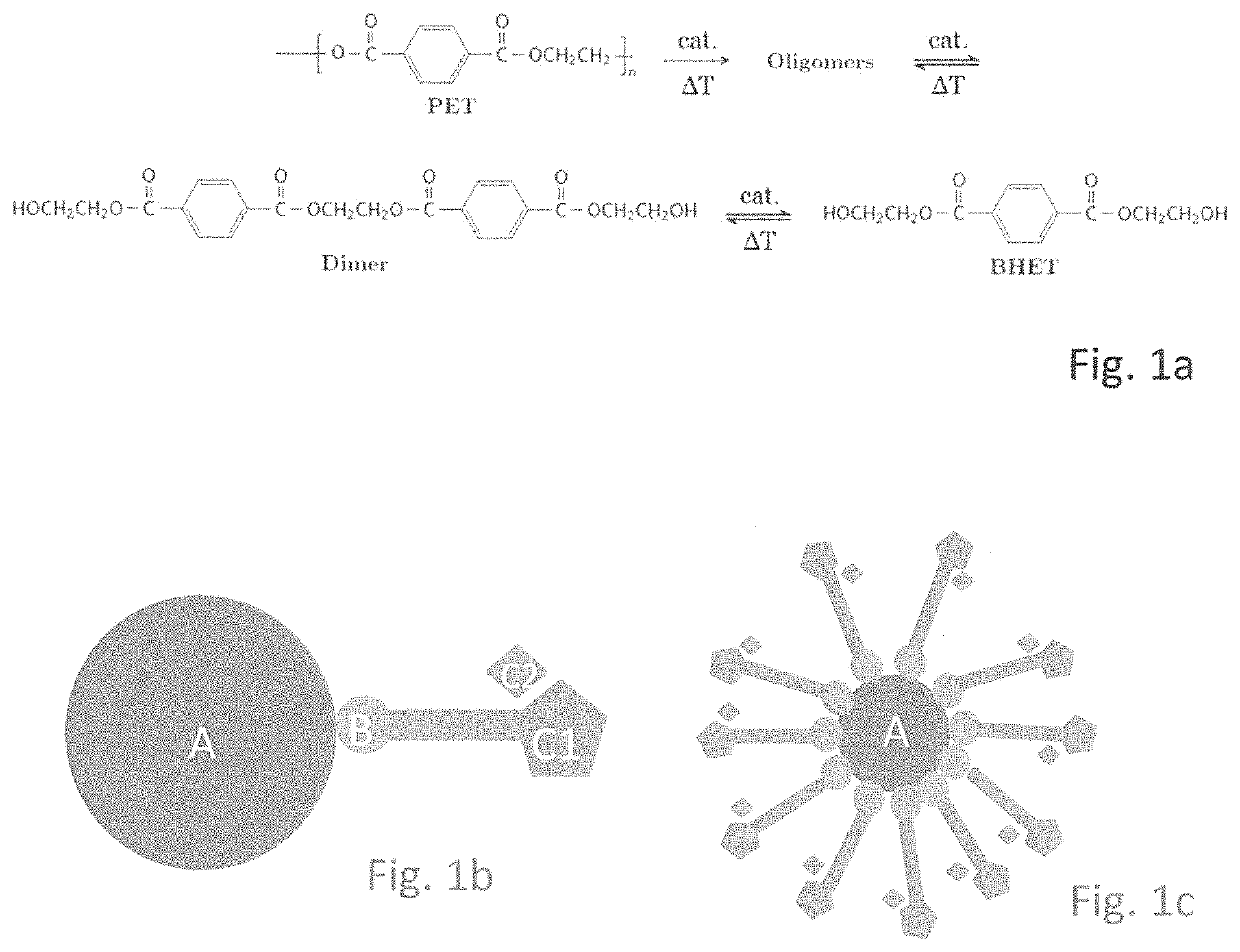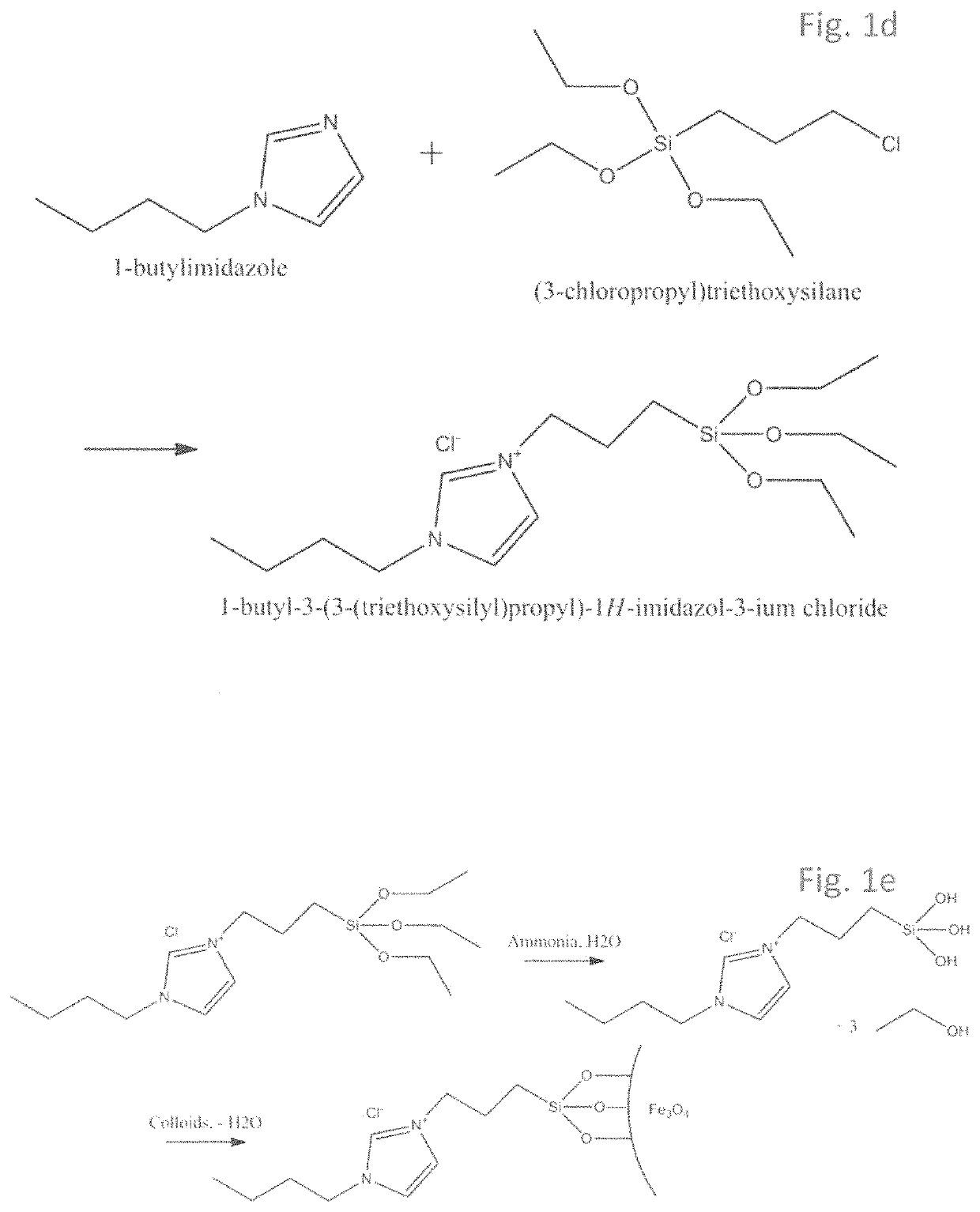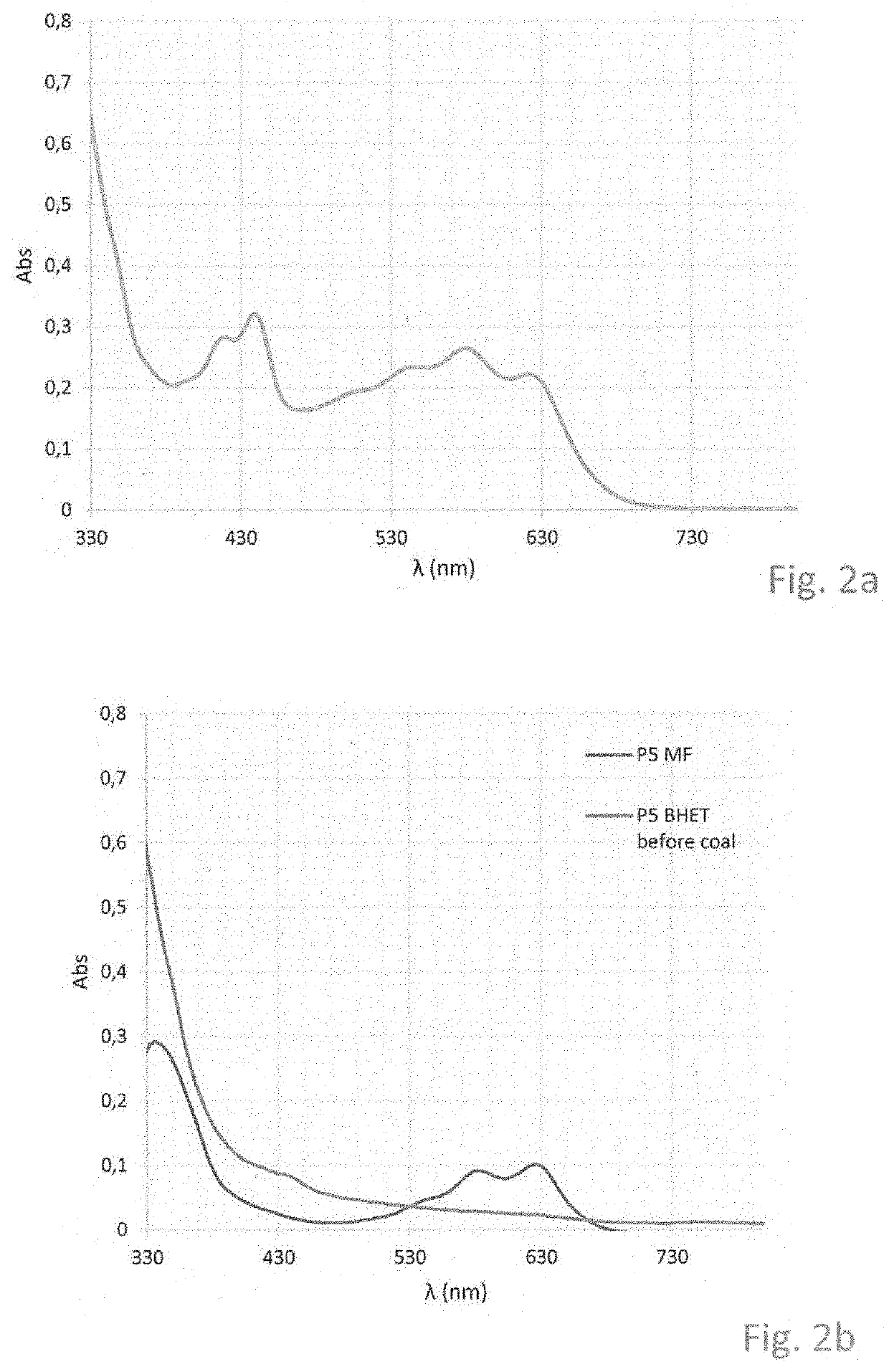Catalyst complex and method of degradation of a polymer material
a polymer material and catalyst complex technology, applied in the direction of organic compound/hydride/coordination complex catalyst, recycling and recovery technologies, etc., can solve the problems of unsatisfactory separation between the two phases, catalyst complex has to be removed, cannot be reused, and disadvantages to the overall yield and commercial viability of degradation treatmen
- Summary
- Abstract
- Description
- Claims
- Application Information
AI Technical Summary
Benefits of technology
Problems solved by technology
Method used
Image
Examples
examples
[0050]Tests have been performed on coloured PET and previously for non-coloured PET. The results thereof are in the same order of magnitude for both conversion and selectivity towards BHET. As a consequence inventors conclude that a colour additive has hardly any or no impact in this respect. Even further, additives, such as pigments, can be removed from the degradation products, with ease.
[0051]Similar tests as above have been performed on a wide range of raw (PET) material, e.g. polyester clothing, PET carpet, PET material from automotive industry, recycled PET, multi-layered PET trays containing other polymers, such as PE and PP. The results thereof are in the same order of magnitude. As a consequence inventors conclude that the process is highly insensitive to different raw (PET) material and robust as well.
[0052]In an example inventors used 1 g of catalyst complex of FIG. 1e and 5 g of PET. Experiments showed that all colorants were removed by the complex, that is no colour was...
example 2
on of a Catalyst Complex
[0053]Preparation of the linker-catalyst complex (bridge-catalyst). An alkylimidazole is mixed with a halogensilane in a 1:1 molar ratio and stirred at a slightly elevated temperature for 8 hours. The nanoparticles are prepared based on the method first described by Massart et al. in 1981: An Fe(II) solution is mixed with a Fe(III) solution in a 1:2 molar ratio respectively. The iron oxide nanoparticles are formed by a co-precipitation reaction in basic medium while stirring. Subsequently, the resulting iron oxide particles are washed with water repeatedly, for instance 2-4 times, and ethanol. In order to separate the iron oxide particles from the washing agent, use is made of magnetic separation.
[0054]Next, an adequate amount of linker-catalyst intermediate diluted with ethanol is mixed well with the dispersion of iron oxide particles, after which ammonia added. The reaction mixture is stirred for 15 hours. Depending on a ratio between linker-catalyst and na...
example 3
Characterisation of the Formed Aggregate Catalyst Complex
[0055]The outside diameter of the aggregates as obtained in Example 2 was determined by means of dynamic light scattering, using a Malvern apparatus (n5000 series). According to this method, a single measurement is based on 7 samples, each of which samples is measured for a plurality of times. All samples were qualified in advance and found suitable for use as a catalyst in the degradation of PET. In a bimodal or multimodal distribution, individual peaks may be identified. As such, it is feasible to distinguish aggregates from non-aggregated particles. The average diameter was determined on the basis of the average number (highest number) and highest intensity, in accordance with the software of the apparatus. Table 1 shows the results. The average highest number varies between 186 and 332, with the average around 250-260 nm; the average intensity varies from 254 to 402, with the average around 320 nm. The average based on int...
PUM
| Property | Measurement | Unit |
|---|---|---|
| particle size | aaaaa | aaaaa |
| specific surface area | aaaaa | aaaaa |
| particle size | aaaaa | aaaaa |
Abstract
Description
Claims
Application Information
 Login to View More
Login to View More - R&D
- Intellectual Property
- Life Sciences
- Materials
- Tech Scout
- Unparalleled Data Quality
- Higher Quality Content
- 60% Fewer Hallucinations
Browse by: Latest US Patents, China's latest patents, Technical Efficacy Thesaurus, Application Domain, Technology Topic, Popular Technical Reports.
© 2025 PatSnap. All rights reserved.Legal|Privacy policy|Modern Slavery Act Transparency Statement|Sitemap|About US| Contact US: help@patsnap.com



